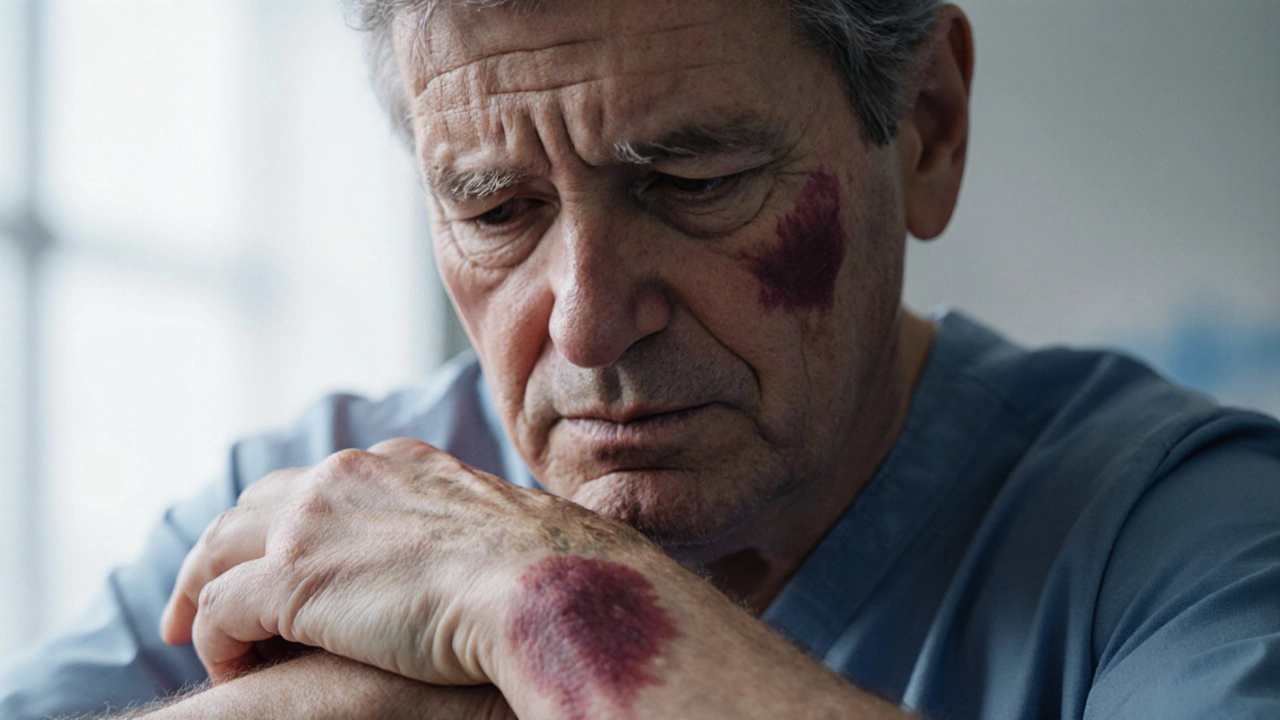Kaposi Sarcoma Support – What You Need to Know
When dealing with Kaposi Sarcoma, a cancer that forms from cells lining blood vessels, often appearing as skin lesions. Also called KS, it typically shows up in people with weakened immune systems. Two key drivers are the HHV-8 virus, human herpesvirus 8, which can trigger tumor growth and HIV/AIDS, a condition that compromises immunity and raises KS risk. Understanding these links helps you see why early detection and proper care matter.
Key Aspects of Kaposi Sarcoma Care
Kaposi Sarcoma encompasses vascular skin lesions that can also affect internal organs. The disease’s severity often hinges on the level of immunosuppression, a reduced ability of the immune system to fight infections and cancer cells. When immunosuppression is high, lesions may spread quickly, making treatment harder. Common symptoms include reddish‑purple patches on the legs, face, or mouth, and sometimes swelling or pain if deeper tissue is involved. Recognizing these signs early lets doctors start interventions before complications develop.
Effective management requires a two‑pronged approach: controlling the underlying cause and targeting the tumor itself. For patients with HIV, consistent antiretroviral therapy (ART) is the cornerstone; it restores immune function and often shrinks KS lesions on its own. When ART isn’t enough, doctors may add chemotherapy agents like liposomal doxorubicin or interferon‑alpha, which attack cancer cells directly. Radiation therapy can also shrink isolated lesions, especially when they cause bleeding or discomfort. Each option has its own side‑effect profile, so tailoring treatment to the individual’s health status is crucial.
Beyond medical care, support resources, community groups, counseling services, and educational materials play a vital role in coping with Kaposi Sarcoma. Joining a support group connects you with others who understand the daily challenges, from managing medication schedules to dealing with visible skin changes. Mental health professionals can help address anxiety or depression that often accompanies a chronic diagnosis. Practical tips—like using gentle skin cleansers, protecting lesions from sun exposure, and keeping a symptom diary—empower patients to take an active role in their health.
For families and caregivers, learning about the disease helps reduce uncertainty. Knowing that Kaposi Sarcoma is linked to HHV‑8 and can be kept in check with ART and targeted therapies eases fear and builds confidence in treatment plans. It also highlights the importance of regular check‑ups; dermatologists and oncologists can spot new lesions early, while infectious disease specialists monitor viral loads and immune markers.
All these pieces—cause, symptoms, treatment, and support—fit together to create a comprehensive picture of Kaposi Sarcoma care. Below, you’ll find a curated collection of articles that dive deeper into each aspect, from medication comparisons to lifestyle adjustments. Use them as a roadmap to navigate your journey, stay informed, and make the best decisions for your health and well‑being.
Managing Anxiety and Depression in Kaposi Sarcoma Patients
- Keith Ashcroft
- |
- |
- 6
Learn how Kaposi Sarcoma affects mental health and get practical steps to manage anxiety and depression, from coping techniques to professional support.
View more
